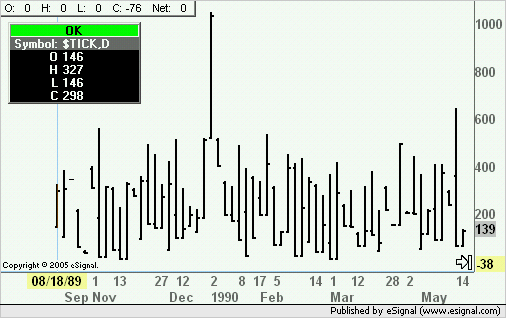I'm a new user and I would like to do the following in EFS:
ES #F should be the main symbol and i would like to have three different nonprice studies underneath(not overlaying each other!):
a 5 SMA of $TICK
a 10 SMA of $ADD
a 5 SMA of $TRIN overlaying a 10SMA of $TRIN
Does anyone have a solution?
Thanks for help!
ES #F should be the main symbol and i would like to have three different nonprice studies underneath(not overlaying each other!):
a 5 SMA of $TICK
a 10 SMA of $ADD
a 5 SMA of $TRIN overlaying a 10SMA of $TRIN
Does anyone have a solution?
Thanks for help!

Comment